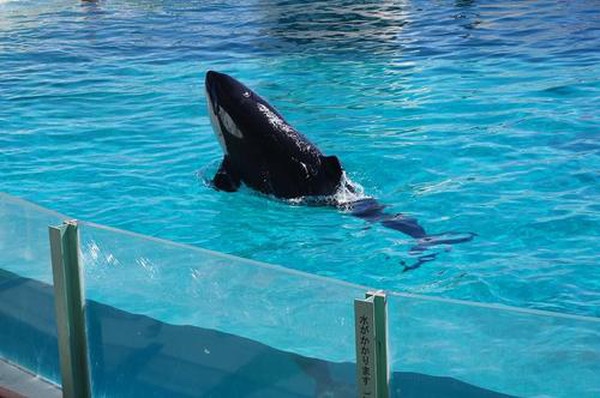Due to the manipulation of family units and the creation of artificial pods in captivity, incompatible individuals are forced into close proximity with one another. The resulting anxiety and tension, as well as the added stresses of living in an unnatural environment, causes excessive aggression between tank mates. This can be expressed in multiple ways such as ramming or tail slapping, but the most common form of aggression is raking.
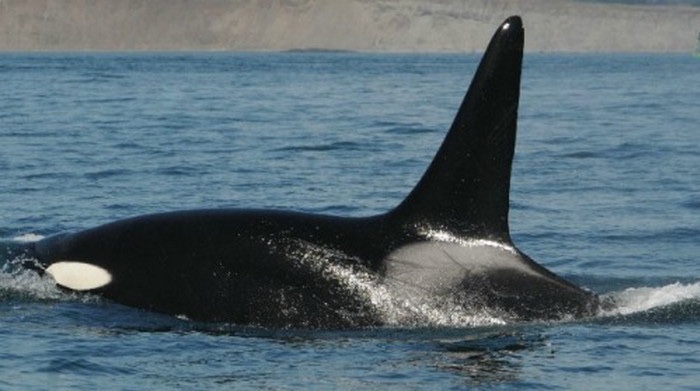
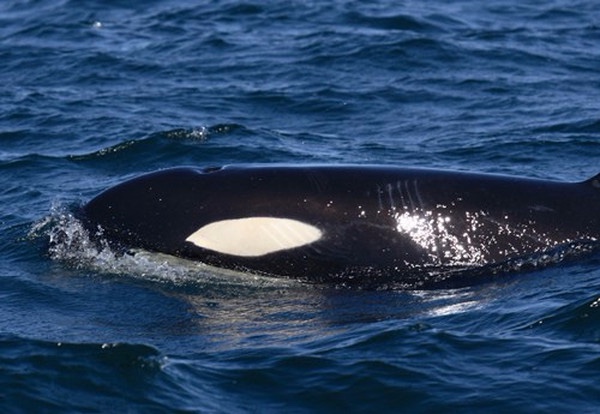
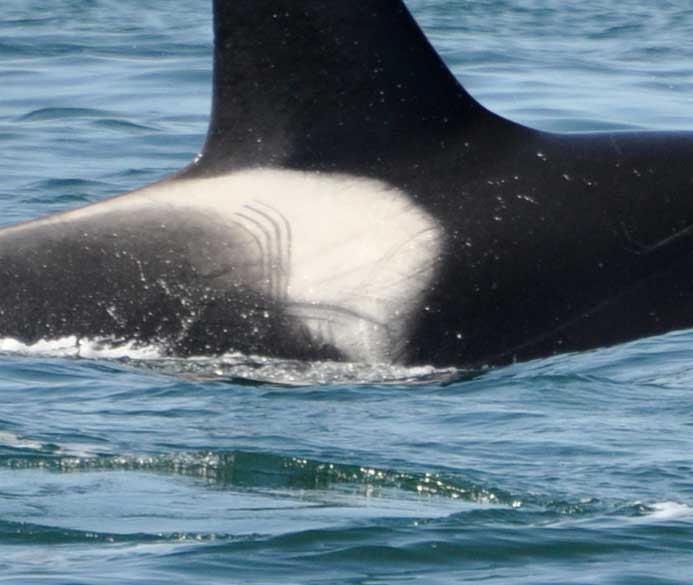
Photos via TheTruthAboutLolita and FreedomForOrcas (Tumblr).
Raking is a natural assertion of dominance and aggression in the wild. It involves an orca dragging its teeth along the skin of another resulting in rake marks – characterised as thin, evenly spaced parallel scratches, usually in rows of no more than four. Rake marks are gained during determinations of dominance, reinforcements of the hierarchy (discipline) and rough play behaviours. However, orcas can also receive rake marks by being helped by another orca. Ingrid Visser recalls a stranding of a female orca who sustained deep rake marks from her pod members as they attempted to pull her off the beach.

Screenshot from a video by GoPro (YouTube).
There have also been cases of pod members assisting sick or injured calves and others acting as midwives to help with births, unintentionally causing extensive scarring on their bodies. When J50 Scarlet (a female Southern Resident) was born in 2014, she was covered in teeth marks from a conspecific. Killer whale experts believe Scarlet became stuck in her mother’s (J16 Slick) womb during labour, leading to another orca intervening and pulling her out with its teeth. Thanks to the intervention, both mother and calf survived the birth. Although, Scarlet was left with prolific scarring resulting in her name.
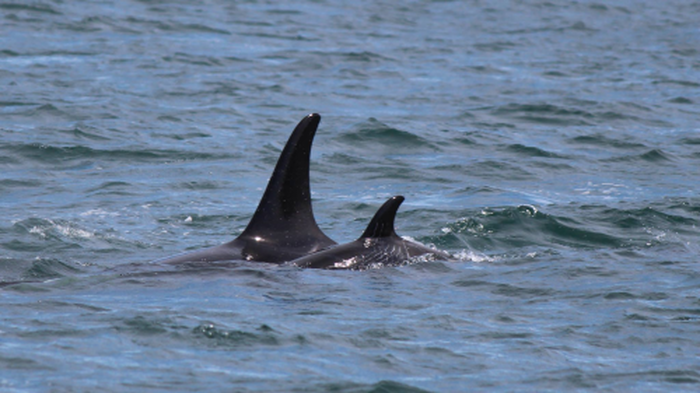
Photo via Wild Whales Vancouver.

Photo via Eagle Wing Tours.
On a sadder note, when J28 Polaris died in 2016 she left behind her 10-month old calf, J54 Dipper, who was still dependant on his mother for milk. As Dipper was not adopted by any lactating females, he became weak and severely malnourished, causing him to enter a state of delirium. When Dipper became too weak to swim, his sister, J46 Star, and cousin, J47 Notch, carefully held him between their bodies to assist him. Once he started to sink, Star desperately grabbed her baby brother in her mouth to bring him to the surface causing severe rake marks on his dorsal fin. Unfortunately, despite Star and Notch’s best efforts, Dipper did not survive.
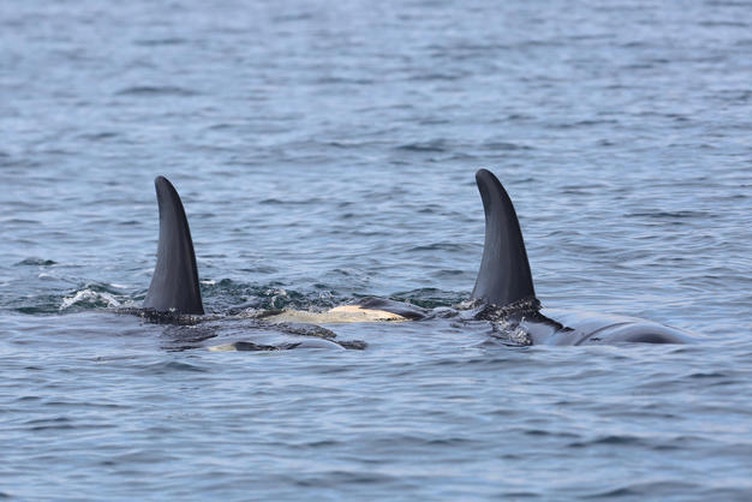
Photo courtesy of the Center for Whale Research via knkx.org
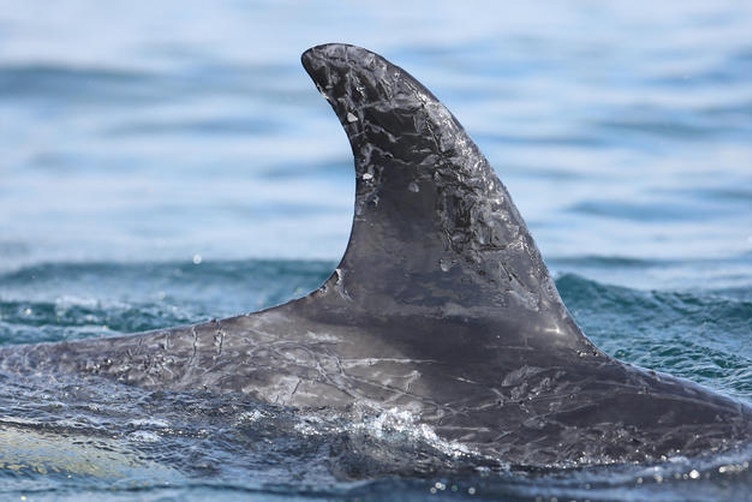
Photo courtesy of the Center for Whale Research via knkx.org.
In the wild, natural, socially healthy rake marks are generally shallow and subtle but some can be deep and draw blood. It is not something which frequently occurs as orcas live in family units and have strong social bonds which may last for life. When outbursts of aggression do occur, it’s often short-lived and no serious harm is done as their social rules prohibit serious violence against each other. Additionally, when fights do occur, they have an entire ocean to flee to. Extremely extensive, prolific rake marks which frequently occur are unnatural in the wild and are most commonly seen in captivity. On the rare occasions that a wild orca can be seen with prolific rake marks, it’s often due to an unstable social structure or a significant problem within the pod. In confinement, the vastly limiting and highly stressful conditions, as well as the mix of incompatible individuals from various populations and ecotypes, contribute to outbursts of hyper-aggression.
Earth‘s prolific rake marks
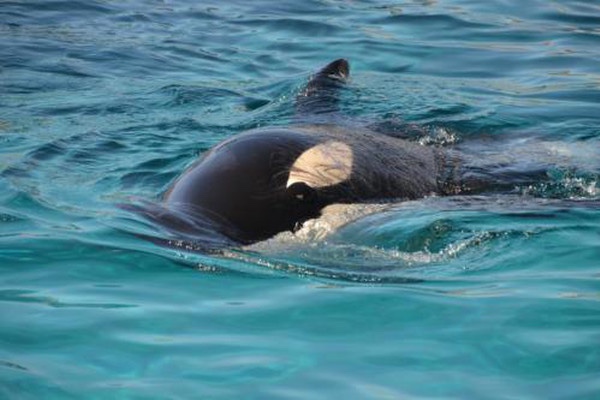
Tekoa‘s prolific rake marks

Hyper-aggressive encounters in captivity have led to significant injuries and even death.
In 1987, Icelandic female Gudrun was sent to SeaWorld Orlando on breeding loan. Upon arrival, Gudrun became a target of the park’s matriarch, Katina, who would frequently bully Gudrun by raking and ramming her. On one occasion, as the females swam around the main pool, Katina began shoving and ramming Gudrun who attempted to defend herself by raking Katina with her teeth. Just as Gudrun approached the matriarch with her mouth wide open, Katina hit Gudrun’s lower jaw hard with her tail flukes. The impact was so immense that it echoed loudly around the stadium and caused two of Gudrun’s teeth to be driven into the bone of her lower jaw. As blood and green vomit spewed from her mouth, Gudrun was directed to D-Pool (the medical pool) and purposely beached on the rising floor. Trainers and animal care staff pinned her down and forced a four-by-four block of wood into her mouth to keep it propped open. Veterinary staff then yanked out the teeth stuck in her jaw bone, all whilst she was in excruciating pain. It took two weeks of recovery before Gudrun could eat normally, although she was never fully able to close her mouth again after the incident.
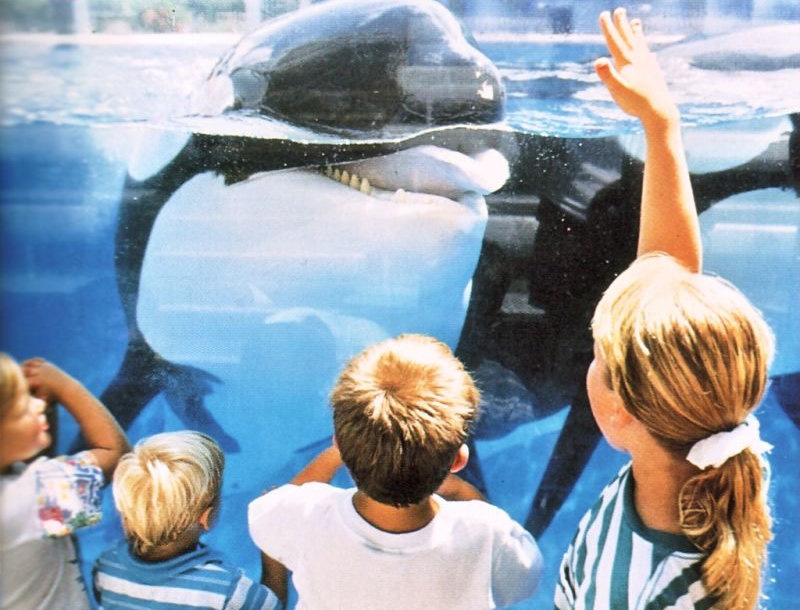
Photo submitted by Valentin666.
More recently, in September 2012, 11-year-old Nakai was participating in a special night show for corporate groups with his half-brother, Ikaika, and tank mate, Keet. During the performance, the trio of males began fighting with one another without warning. Although an instigator could not be determined, Nakai split into a back pool whereas Ikaika and Keet returned to their trainers resulting in the continuation of the show. It was only when trainers called Nakai over for a final feeding that they realised a “dinner-plate-sized” chunk of flesh was missing from his chin – the detached flesh was later retrieved from the bottom of the pool. The severe laceration exposed underlying tissues and bone. SeaWorld provided little information regarding what caused the injury, simply contending that Nakai “came into contact with a portion of the pool” during a “normal social behaviour”. An investigation the USDA launched following the incident concluded Nakai’s injury appeared to have been caused by his jaw scraping the recessed track that holds the watertight gates between two of the pools at Shamu Stadium.

Photo by Dr. Ingrid Visser.
Although Nakai’s injury was not directly caused by another orca, it was a result of an aggressive encounter between an artificial arrangement of animals. Although Ikaika is Nakai’s half-brother, the pair met each other for the first time less than a year prior to the incident. Keet, on the other hand, is unrelated to Nakai and is an Icelandic-Southern Resident hybrid. Earlier in the year, Nakai injured Keet by biting his erect penis during an artificial insemination procedure. The bite caused a lengthy period of extensive bleeding and resulted in Nakai being banned from being in the pool with Keet during AI procedures. Evidently, the trio of young males lacked the strong social bonds required for social cohesion in orca society leading to a severe outburst of aggression.
One fatal incident of aggression occurred on August 21st, 1989 at SeaWorld San Diego. During a performance, Icelandic matriarch Kandu 5 rammed Northern Resident Corky 2 with her mouth open, attempting to rake her. Either due to the impact of the collision, or whether Kandu missed Corky and struck one of the tank walls, Kandu fractured her upper jaw and severed major arteries in her nasal passages. Although Corky appeared uninjured, enormous amounts of blood blasted from Kandu’s blowhole. Kandu was directed to the medical pool, accompanied by her 11-month-old calf, Orkid, to diminish her activity and reduce her blood pressure in hope of inducing clotting. Sadly, attempts to help Kandu were futile as the damage was irreversible. As she began to lapse into unconsciousness, veterinary staff decided it would safer for the calf if the pair were to return to one of the larger back pools.
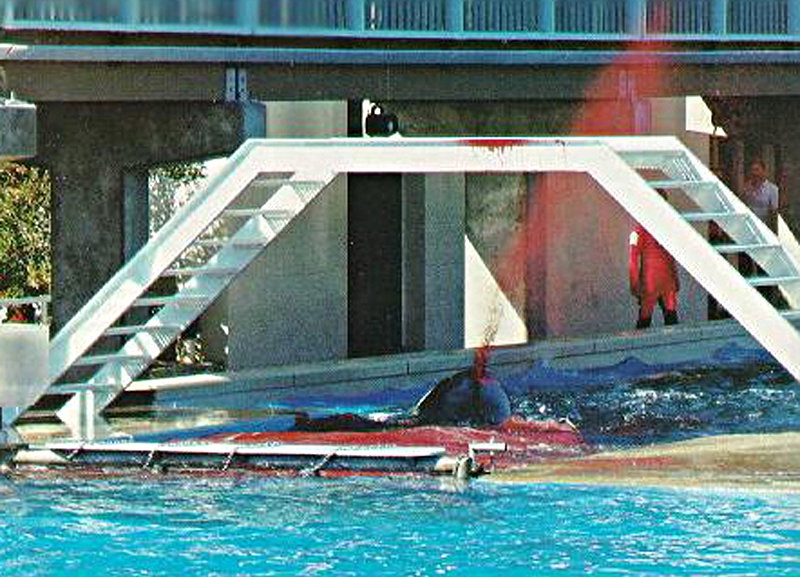
Watch the video here.
Over the course of 45 minutes, Kandu slowly bled to death, spouting a spray of blood every time she surfaced. Orkid remained by her mother’s side throughout the entire ordeal and persisted to swim helpless circles around her mother’s lifeless body as it sank to the bottom of the pool.
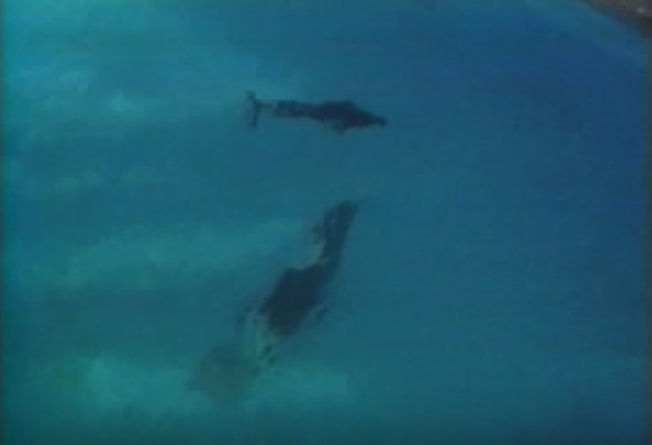
Watch the video here.
Corky 2 and Kandu 5 originate from different geographical regions and would never have crossed paths in the wild. Unlike in a tank, wild orcas can flee from aggressive encounters and can remain a safe distance away from those they do not get along with. Corky and Kandu did not have this option. In fact, SeaWorld was more than aware of the growing tensions between Corky and Kandu but still insisted on keeping them together. By August 1989, Corky had lost seven calves, none of which survived to two months old. When Kandu successfully gave birth to Orkid in 1988, Corky sought to play the motherly role she was stripped of when her own calves died. As a protective mother, Kandu disliked the attention Corky paid to Orkid, leading to spats between the two females – one of which led to Kandu leaving Corky injured and bleeding after tearing a gash in her lower abdomen.
After Icelandic female Kenau was moved to SeaWorld San Antonio, and the park’s bull orca, Orky 2, died in 1988, four whales (Corky 2, Knootka, Kandu 5 and Orkid) remained at the San Diego park. With a four-pool complex, and two inseparable whales (Kandu 5 and her daughter, Orkid), SeaWorld had the means to keep Corky and Kandu separated. Yet, SeaWorld routinely kept Kandu and Corky in close proximity; sometimes pairing Orkid and Corky together during shows (as they did during the performance of the fatal incident), only adding to Kandu’s frustration. SeaWorld’s negligence and failure to provide their orcas with a safe environment ultimately led to Kandu’s brutal death. She was only 14-years-old.
